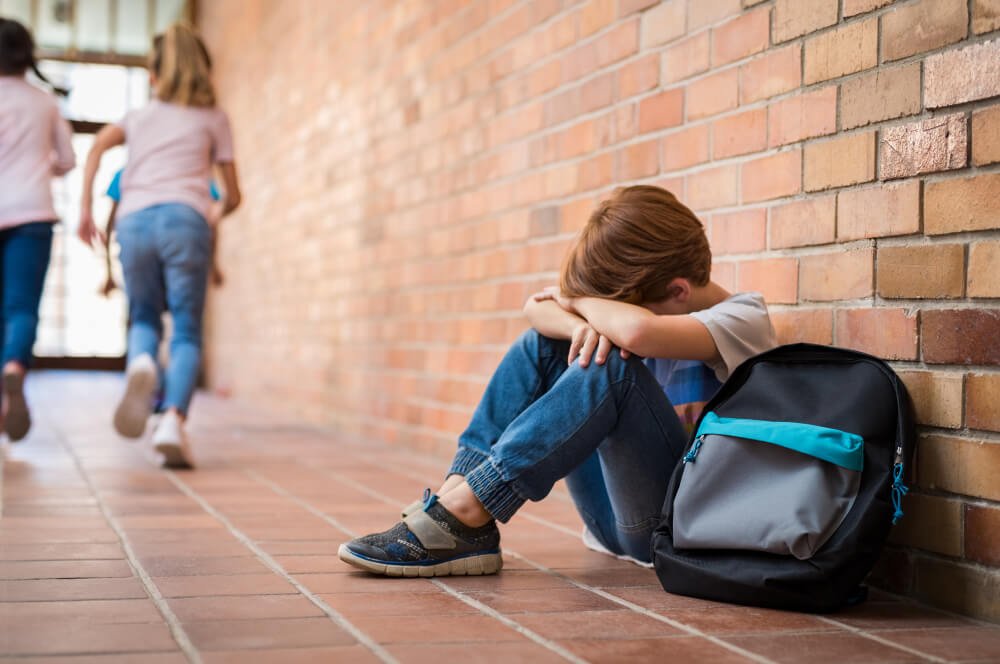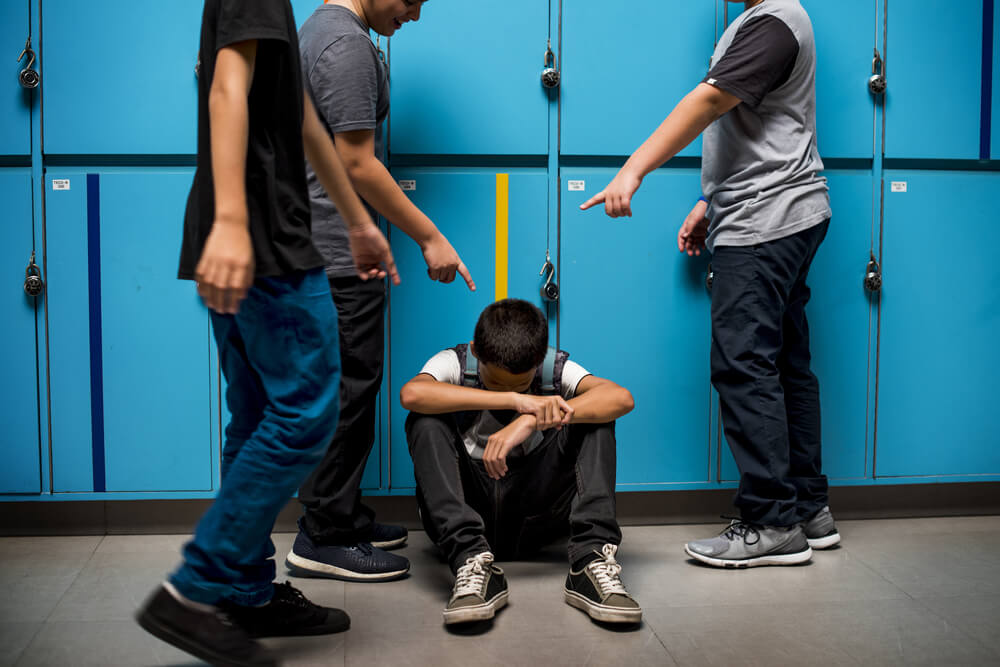Many segments of society, including parents, teachers, students, and community partners, are concerned about how to stop bullying in school. Administrators wonder how to stop a bully, and parents wonder, “Do schools do enough to prevent bullying?” Even pediatric care centers are involved in addressing this problem.
October is National Bullying Prevention Month, helping mobilize resources and raise awareness to fight the problem.
Defining Bullying
Before we can answer how to deal with bullies, we must define a few terms. Bullying is ongoing, unprovoked, abusive conduct such as mocking, threatening, or harassing another who is, for some reason, less powerful or able to fend off the attacks. Cyberbullying, which often precedes or follows in-person abuse, involves this behavior online or via electronic devices. An unintentional offense given, or an isolated or justifiable flash of anger, is not bullying.
Facing Up to Bullying: Look for Signs

Between 2016 and 2019, one study found that reports of either bullying or being bullied had increased 35%. Twelve-to-seventeen-year-olds who said they had bullied others in the past 30 days went from about 11% to 30%. The good news is that some of this rise may be due to students’ increased recognition of bullying. For more students to realize and admit to bullying is the first step to personal change. As a parent, you can worry about what to do if your child is being bullied and the school does nothing, but not enough parents face the question, “Is my child a bully?” We need to be clear-eyed about two things: we do not know everything about our kids, and even our own beloved child can be cruel. Bullying Prevention Month can provide a wake-up call about this.
Parents and others need to be alert because a child may not have the language or desire to “tell on” a bully. A child’s increased use or sudden ignoring of devices and hiding or lying about use can be considered warning signals. And if a child doesn’t have the mastery of tech that another does, he can be vulnerable to malicious youngsters who know how to cover their tracks or spread images or narratives in various forms. A kid isolated due to family changes, lack of friends, or disability is more likely to be exposed to bullying. Students who have high energy, like to test limits, enjoy an audience, and lack outlets for frustration may turn to bullying.
According to the Cyberbullying Research Center, outward signs of being victimized include:
- changes in sleep patterns — sleeplessness or extra time in bed, which can indicate depression, reluctance to be at school in the bullied environment, and fear about how to stop a bully in their life
- changes in eating habits — an increase or decrease in appetite
- anxiety
- begging to change schools or wanting to be homeschooled
- asking to come home ill from school
- preferring time at home to time with friends, or having few friends
- making statements about feeling worthless or mentioning suicide
and clues that your child may be bullying include:
- secretive use of devices or multiple accounts under their own or other’s names
- new friends who are unkind or in trouble
- increasing withdrawal or scorn toward family members
- arrogance about their mastery of tech skills
- callousness toward many of their peers
For both categories above, deterioration of academic performance and attention in class may also tell adults that something is wrong.
Your pediatric care center can talk with you and your child if you see any of the signs mentioned above. Keeping the lines of communication open with kids is crucial to address these issues. Sometimes, a pediatric care center medical professional can have a frank dialogue with a youngster that leads to positive change.
Health, Wealth, and Bullying
Bullying can exist regardless of the wealth and prestige of the school or its population. If bullying isn’t addressed, the health impact can be severe and long-lasting. According to a British study that followed students into adulthood, bullying victims had worse health, earned less, and had poorer social relationships.
Being bullied causes stress, which reduces immunity. Kids can navigate the occasional stressful event such as a big exam, but the ongoing nature of bullying can change a child’s self-image and sense of place in the world, leading to depression (Segerstrom and Miller, 2004).
The School’s Responsibility
According to the U.S. Supreme Court, there is no bright-line where the school’s responsibility lies. A school could be sued for damages for failure to intervene in known student-on-student harassment. However, the school must have acted with “deliberate indifference” toward the situation. The harassment must be so severe, pervasive, and objectively offensive that it effectively bars the victim’s access to school.
The landmark case on student free speech, Tinker v. Des Moines, allows suspension from school if a student’s speech, “in class or out of it,” substantially disrupts the educational process with disorder or invades the rights of others. State boards and school districts have a patchwork of policies that apply these legal principles to handle the issue, but do schools do enough to prevent bullying? And what should you do if your child is being bullied and your school does nothing?
Successful Strategies

Not all approaches to the problem are effective. Punishment, coerced apology (which can lead to later retaliation), peer mediation, and bystander intervention only show spotty success. According to research, a positive school climate and social and emotional learning are better strategies.
The climate at a school can convey a unified mission, where everyone is seen and everyone has a part. Or it can be a disjointed, discouraged dog-eat-dog environment, where pockets of unsupervised anarchy exist, and power-hungry students hold sway.
In a successful school, teachers listen. Students widely report that teachers fail to discern or respond to bullying issues. When teachers are not empathetic, don’t follow through on complaints or threats, or favor some types of students over others, a climate conducive to bullying is created. Teachers report feeling ill-equipped to handle bullying issues and may even unwittingly engage in bullying behavior themselves. Overwhelmed with other matters, they may fail to model skills they do know. Faculty, parents, and students can all benefit from social/emotional training.
Social/emotional skills such as:
- role-playing activities (more effective than theatrical activities)
- giving kids with bullying tendencies leadership opportunities and training that channel their aggression
- teaching the Golden Rule principle of treating others the way you would like to be treated
- listening and reflecting-back
- recognizing and naming emotions and motivations
- connecting family with school in the anti-bullying effort
The Way Forward
If you suspect your child is a bully or victim of bullying, contact us. We’re experts and have been helping families for years with many of the problems arising from this issue.


